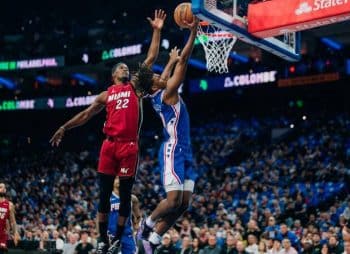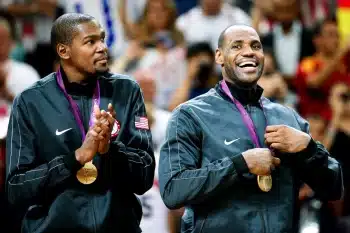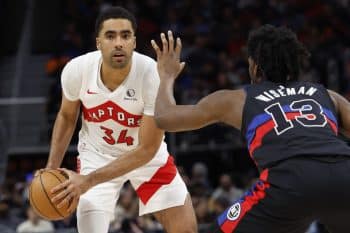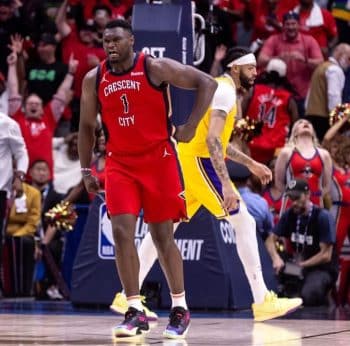NBA
Why Trading Knight Was the Right Move for the Bucks
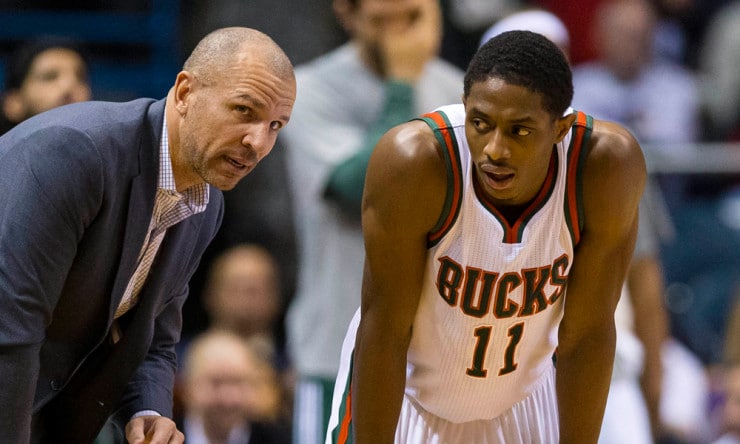
The Milwaukee Bucks executed perhaps the most unexpected move of the trade deadline, swapping point guard Brandon Knight for fellow point guards Michael-Carter Williams and Tyler Ennis along with center Miles Plumlee.* The move made little sense to many. The Bucks are the sixth seed, making an unexpected playoff push. Carter-Williams is not perceived to be anywhere near the player Knight is at this point, while Ennis has barely played and Plumlee is a backup-quality center. Knight had been talked about as a potential All-Star, the Bucks’ best player, and now they are giving him up prior to what was shaping up as a feel-good return to the playoffs.
The analysis of the trade must start with Knight, his contract demands as a restricted free agent and how the perception of his abilities differs with the reality. To be clear, Knight was a very important player for the Bucks this year. At over 40 percent on threes, many of which were off the dribble, he provided shot-making that was absolutely essential to a struggling Milwaukee offense, especially once prized rookie Jabari Parker tore his ACL. That said, Knight is not a special player. He struggles to distribute the ball and create for others, with a tendency to pound the dribble and miss open players on pick and rolls. That may have been exacerbated by Milwaukee’s lack of other offensive talent, but aside from his shooting, Knight does not really have another standout skill.
The All-Star talk for Knight was created by a weak Eastern Conference, injuries among those already voted in and, most importantly, the Bucks’ team success. The perception may have been that the Bucks, as a surprise playoff team, “deserved” an All-Star. Knight was the player putting up raw numbers for the Bucks, so the tendency was to ascribe their success to him. In reality, the Bucks’ fantastic defense was the driver of their surprise season, as they currently sport the league’s third-ranked unit, per Nylon Calculus. Regarded as an average defender, Knight deserves little credit for that performance. On the other end, the Bucks are only 22nd in offense. They have actually been worse overall this season with Knight on the floor, though they started to play better with him out there recently.
Add it all up and Knight is probably a slightly below-average starting point guard right now.* He is young for his experience level at 23, but his lack of explosive athleticism or vision does serve to limit his ceiling quite a bit. Although players can always surprise in their development, a reasonable projection is that Knight does not ever become one of the league’s top-10 point guards.
The greater issue is that Knight was a good bet to be paid this offseason as a restricted free agent. He and the Bucks were unable to reach an agreement on a contract extension last fall, but they likely have a good idea of what he is looking for. Now that he has had what many would deem a breakout season, his price tag will only go up. One would expect he would ask for and likely get a minimum of $13 million per season, and possibly up to the projected maximum starting at $15.9 million in the first year.
In contrast to Knight , Carter-Williams is on a cost-controlled rookie deal through the 2017 season. Plumlee has another year on his rookie deal, while Ennis won’t be a free agent until after the 2018 season. Carter-Williams is not the player Knight is right now, and they are closer in age than one might expect from when they were drafted. If he does not learn to shoot, the Bucks will be quite challenged offensively considering the long-range struggles of another core piece, Giannis Antetokounmpo.* And Carter-Williams has struggled with injuries so far in his career. He has been extremely inefficient in his career overall, although some of that is likely from bearing too much of an offensive burden for the Sixers.
But Carter-Williams has a lot of skills Knight lacks. That starts defensively, where his length, quickness and anticipation fit right into the Bucks’ switching scheme on defense. He also has much better vision than Knight. There is at least a chance Carter-Williams surpasses Knight as a player if he can learn to shoot and finish a little better, and Milwaukee gets to explore that upside for a fifth or less of what Knight will be making over the next two years. While I would rather have had the Lakers’ protected pick the Sixers obtained for Carter-Williams, I would also rather have Carter-Williams, Ennis and Plumlee than Knight for the next two years on their respective deals.
Another enormous driver of this deal was the restricted free agency of Khris Middleton this offseason. As our Ben Dowsett detailed, Middleton has been awesome this year, shooting over 40 percent on threes while grading out as one of the best defensive wings in the league on film and by the numbers. He will deserve a raise to at least eight figures this offseason (though he may not get it due to his restricted status and the fact that some teams still underrate his skill set), and frankly is more important for the Bucks to keep than Knight. There are far fewer players who can provide Middleton’s defense and shooting around the league versus point guards who can approximate Knight’s production. We tend to overrate what players do when they have the ball in their hands, but Middleton’s skill set is both rarer and of greater magnitude than Knight’s.
Jared Dudley is also a free agent. At age 29, he is outplaying his $4.3 million player option for next year, and will likely opt out to secure a more lucrative long-term deal into his 30s. His versatility on the wing and as a small-ball four has also been valuable for the Bucks this year, and they will surely seek to retain him (although they may not if the price gets too high given his age.)
Here is the Bucks’ post-trade salary structure:
We see the key impact of buying out Larry Sanders. Our Eric Pincus has reported that the remaining salary obligation to Sanders was not in fact stretched, as had been previously assumed. Instead, it shows that the Bucks will owe him a mere $4.4 million per season, opening up another $6.6 million in cap space each year. Even in a worst-case scenario in which Dudley opts out and the Bucks must account for his cap hold, they should still begin the summer with around $8.8 million in cap space.
If Dudley opts in to his $4.25 million, that cap space rises to around $13 million. If he is allowed to leave in free agency or is renounced, Milwaukee could have as much as $17 million in cap space. But that number, of course, accounts only for Middleton’s cap hold. Milwaukee can use its cap space, then exceed the cap to re-sign Middleton. But as the Houston Rockets learned last year when the Dallas Mavericks signed Chandler Parsons to an offer sheet, that cap room can disappear in the three days it takes to decide whether to match an offer sheet. The timing here will be critical if Milwaukee wants to add to the team. Had the Bucks retained Knight as well, his $8.8 million cap hold would have torpedoed their salary cap space. And another restricted free agent on the books would have increased the risk of what space they did have being consumed by an ill-timed offer sheet. Without Knight, the Bucks have exponentially more flexibility this offseason.
With Carter-Williams, Middleton, Antetokounmpo and Parker, the Bucks have long-term pieces at the one through four positions. They would likely try to add a center, which is the deepest position of the 2015 free agent class. If the Bucks get to the full $17 million in cap space, players like Brook Lopez, Omer Asik, Roy Hibbert, DeAndre Jordan, Robin Lopez, Tyson Chandler, Enes Kanter and Al Jefferson could be available. With their length and ability to switch on the wings, the Bucks might find themselves uniquely situated to carry a more offensive-oriented center than the typical team. If such older players don’t fit the Bucks’ timeline, they could look to add cheaper pieces on short-term deals and roll more space over until 2016. That summer, they will have core players Parker, Antetokounmpo, Middleton (if re-signed for around $10 million a year) and Carter-Williams under contract for about $22 million with a projected $90 million cap. Most of the other large salaries on the team expire in 2016. Even accounting for Sanders’ dead money and other players they may wish to keep, the Bucks could have as much as $50 million in cap space in the summer of 2016 if they play their cards right.*
Moving on from Knight was a gamble, as he is a solid player. But it is a good one. Carter-Williams, Plumlee, Ennis and the players the Bucks can get in free agency with Knight’s foregone money have a very good chance of exceeding his production over the next four years.


